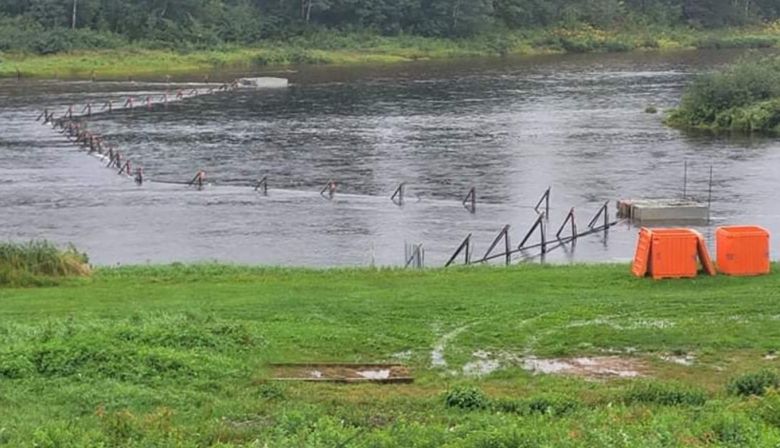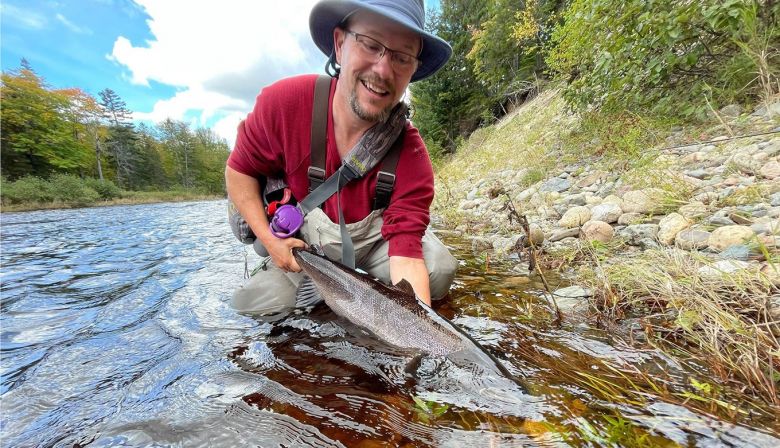
Subscribe & stay up-to-date with ASF

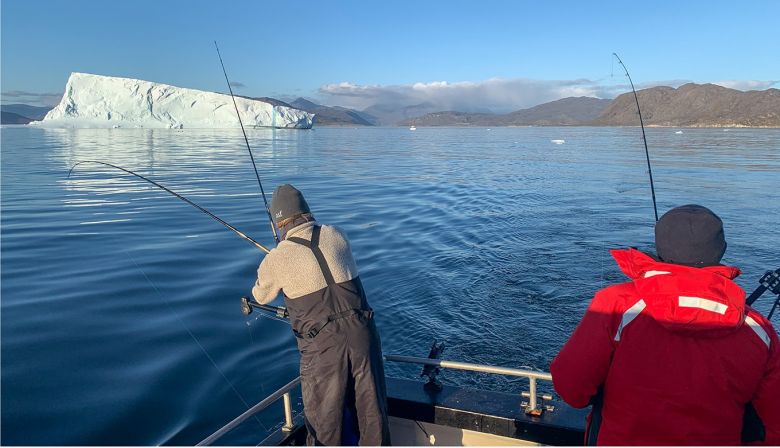
“Most days begin with a bit of a breeze, but generally it fades out and then we have had calm seas plus the blue skies. Plus this year there are numerous Atlantic salmon in the waters off Qaqortoq.”
The project did not start off as auspiciously he said. There were a few days of rain, and that led into some falls of snow, before the weather and sea state turned around in the biologists’ favour.
“We came with 70 of the satellite tags, and so far we have been able to attach 66 of them. We are extremely pleased with the way this has come together this year,” said Jonathan.
The satellite tags consist of sophisticated digital recording units, attached to a small balloon, with a short aerial on top.
The Atlantic salmon are fished by multiple rods, each single hooked, and reeled in. The success this year plus glassy water surface most days has kept stress on the fish to a minimum.
Each is brought aboard the boat, run by a knowledgable Qaqortoq fisherman, and they are temporarily settled in coolers with ocean water, which is around 2 C. A scale sample is taken that can identify both the history of the Atlantic salmon, and give information on the origin of the fish.
Some of the Atlantic salmon will be those originating in rivers of the Republic of Ireland and the United Kingdom. But it is expected that the larger share will be returning to rivers in eastern Canada and Maine.
The ASF biologists attach the satellite tag transmitters with efficiency, to reduce stress on the Atlantic salmon.
First a saddle of inert resin is attached, bracketing the dorsal fin. Then the satellite tag is attached to the saddle. The attachment to the salmon is programmed to release after a defined number of months.
The Atlantic salmon is then carefully returned to the water.
When the satellite transmitter “pops off,” it will float to the ocean surface, and begin transmitting. Satellites in space passing overhead will collect the data, and with analysis can provide the route taken by the salmon, as well as the history of its cruising depth, whether at the surface or as deep as 800 m. or more, as ASF has discovered from previous work. There remains a mystery in the reason the Atlantic salmon spend days in the black depths far from the sunlight. Speculation includes the pursuit of prey, feeding on small fish and juvenile squid or perhaps some crustaceans. Potentially they are keeping away from ocean predators.
The tracking program has collaboration with the U.S. National Oceanic and Atmospheric Administration (NOAA) and with Canada’s Department of Fisheries and Oceans (DFO). But this year only ASF biologists were able to get into the field in Greenland.
Jonathan Carr is extremely optimistic on the success this year.
“So far we have attached 66 of the 70 satellite pop-off tags, and by the time we are finished this coming weekend, we are hoping to attach most of the remaining units.”

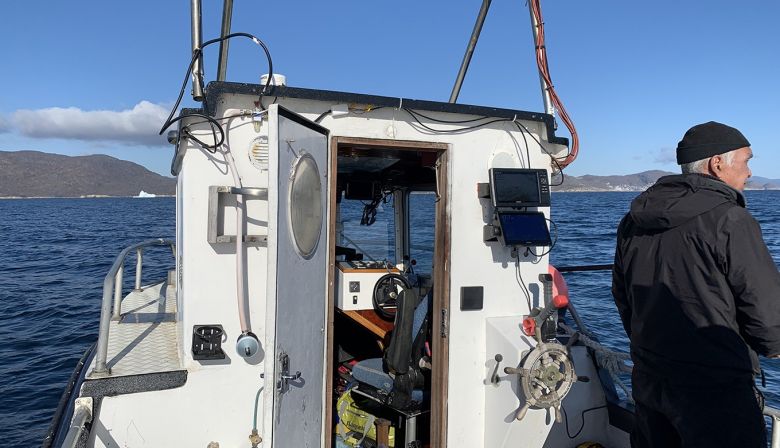
ASF Heather Perry will be returning to St. Andrews in the next few days.
“From Qaqortoq I will return to the airport at Narsarsuaq. From there I will be flying to Copenhagen, Denmark. I don’t need to get a Covid-19 test in Greenland to get there.
” But while in Copenhagen I need to get a Covid-19 test to continue the trip home, via Reykjavik, and then Toronto. The testing for Covid-19 is all part of the travel arrangements one needs to do to undertake this successful Greenland research.”
Jonathan Carr at about the same time will travel north to the Greenland capital at Nuuk for meetings. From there he will be following a similar route to get back to his home in St. George, NB. Not quite as easy as it has been in the past, as the airlines appear nearly overwhelmed with the situation, in part with travellers changing plans.
The Atlantic salmon at-sea tracking research is vitally important in understanding where the high mortality at sea for Atlantic salmon is taking place. It is increasingly clear that Atlantic salmon do not follow a single migration route, either to the Greenland feeding grounds, or back home. The tracking research in Greenland waters gives biologists the best chance of understanding the issues with the return phase of the great Atlantic salmon migration to and from rivers in Maine, Atlantic Canada and Quebec.

Don Ivany, ASF Director of Programs in Newfoundland and Labrador, has a few comments, mostly on river conditions that are now leading up to spawning time for the salmon.
While the recent rain we had during the past week caused water levels to rise on the Upper Humber River there has been only a slight rise on the Lower Humber. That said, the water is still too high for good angling on the Lower Humber and there are very few people doing any fishing in this area these days. The water temperature is currently running at 14.5 C.
There has not been any change in water levels on the Lower Exploits River because water levels are regulated for hydro purposes and remain the same as they were running last week. Water temperatures are cold at 13.0C. Again, very few people, if any, are fishing these days on the Exploits.
On the Gander there has been an increase in water levels over the past ten days increasing from about 50 c/m/s to 75 c/m/s currently. However, this is still well below the normal daily flow of 120 c/m/s. Again, the water temperature on the Lower Gander is at 13.0 C currently.
Rick Maddigan has a few other observations:
I was on the Upper Salmonier River on Sunday. Water level could be described as medium high. Perfect angling water, but unfortunately angling is closed.
However, this is the highest water level we have had since early May so levels should be fine for spawning in a month or so.
Avec les fortes pluies de la fin de semaine dernière qui ont entrainé des hausses de débits sérieux en peu de temps, les conditions de pêche sont devenues très difficiles. Alors, je vous reviens la semaine prochaine avec une récapitulation de la saison 2021 et des statistiques au 30 septembre.
Entre-temps, pour vous donner un avant-gout d’un reportage qui paraitra dans le prochain numéro de notre magazine, voici un extrait de l’article intitulé « Une petite rivière avec un grand rêve ». Il s’agit de la rivière Saint-Jean (Saguenay) où des intervenants locaux aimeraient bien rétablir l’état naturel de ce cours d’eau et de redonner aux espèces piscicoles de cette rivière l’accès à un habitat historique.
Je me suis rendu à la rivière Saint-Jean la semaine dernière afin d’acquérir plus d’information au sujet d’un éventuel projet qui verrait le démantèlement d’une minicentrale hydroélectrique. À 11 kilomètres de l’embouchure de la rivière se trouve le barrage Morin. D’une hauteur de 13,5 mètres, cette structure empêche le libre passage des poissons vers un habitat idéal depuis 1957.
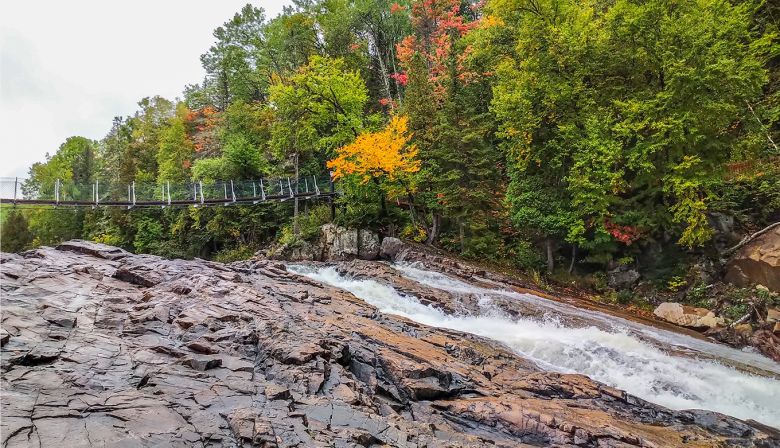
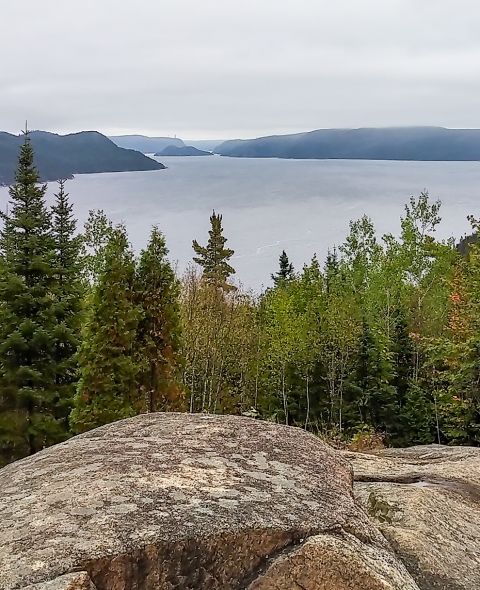

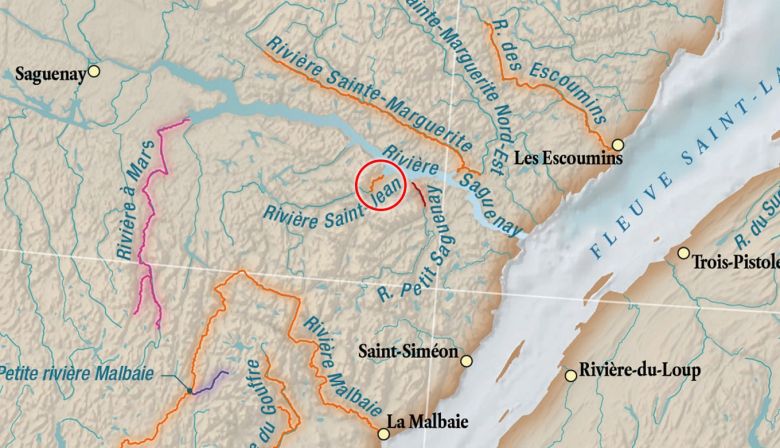
Next week, I will recap the 2021 season and include statistics to Sept. 30 and comparative data from previous years.
Recently, I traveled to the village of Anse Saint-Jean in the Saguenay region to meet local stakeholders to be briefed on their eventual project to have the Morin Dam dismantled. The 45ft (13.5 metre) cement barrier entered into service in 1957, halting the free up-river migration of anadromous fish.
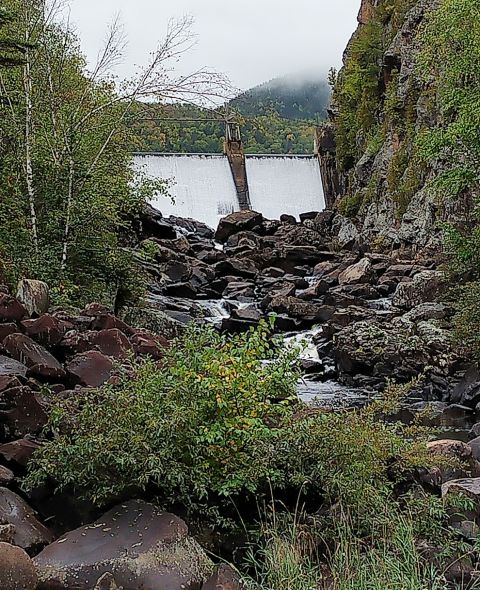

His story “Small River, Big Dreams,” will appear in the Journal’s winter issue and will examine the question of fish passage in the pre-dam era and the plans that the local river group have for their river and the Morin Dam.
The beauty of the Saguenay region is something to behold. We were fortunate to have lunch at the Bistro de l’Anse, which is located in a former salmon club. Built by the Price family, who owned the largest forestry company of its day, many of the original buildings remain in excellent condition at the mouth of the Anse St-Jean.
A last stop at a nearby lookout offered a view over the Saguenay Fjord. Even the dark clouds and rain could not diminish the spectacular wild beauty of this World Heritage site.
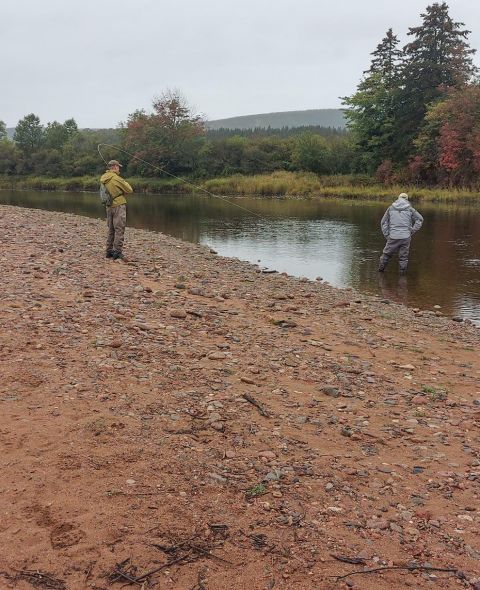
Recent rain is bringing water levels up on the Margaree. Hopefully it will be enough to bring in some new fish. Atlantic salmon are being hooked in both the upper and lower sections of the river now.
With more rains forecasted for the weekend, it could be the last bit needed to start the bigger fall run.
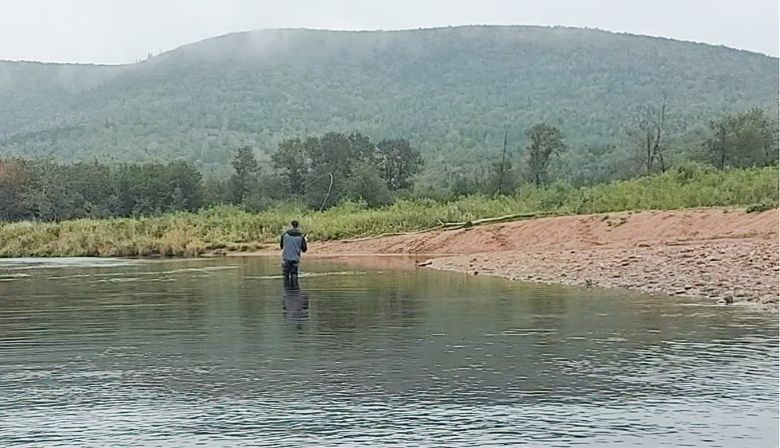
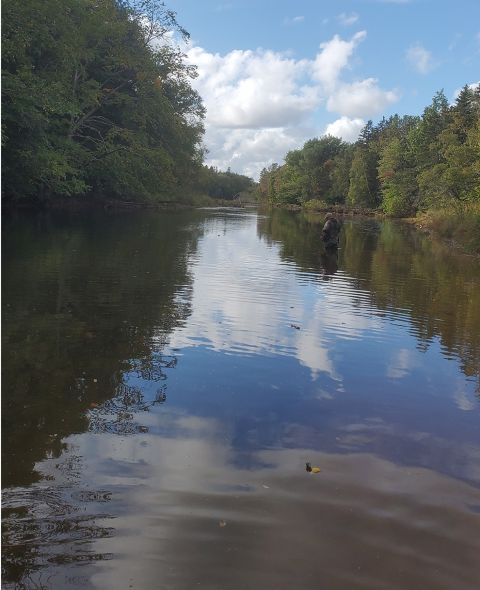
Taylor Main has a short report this week:
The rivers have dropped but are still at angling levels, following heavy rains in early September. Any Atlantic salmon that the rain brought up have continued upstream towards spawning areas and things were very quiet this week. I didn’t hear a single report of any fish hooked and there were very few sightings.
Part of this could be that there are few anglers around. I suspect most have switched to fall steelhead or sea bass for the time being.
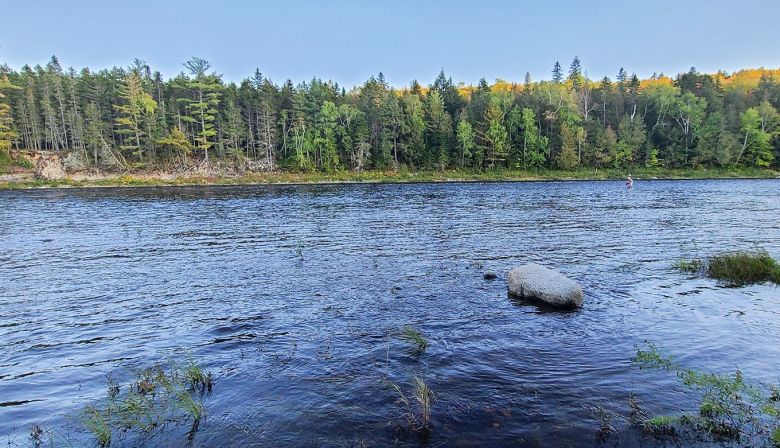
Miramichi
Nathan Wilbur, ASF Director of Regional Programs, says:
Many anglers on the Miramichi are reporting that with the high water conditions through September, many of the summer fish have moved up on through and everyone is waiting for some fall fish to come in from the estuary.
Anglers are still hooking up throughout the watershed despite high water. It’s strange to say, but it has almost been too much of a good thing with rain event after rain event. Through the lens of the salmon, however, this is exactly what they need to get into the upper reaches of the river systems to reach the most productive, clean, cold water habitats where their offspring will thrive.
Reaching headwaters has many benefits, beginning with cleaner gravel for spawning, and more stable winter ice and flow conditions due to streams being primarily groundwater-fed. This helps keep redds, and eggs, more stable through a challenging winter season.
Now is the time of year that other wonderful New Brunswick rivers come into their own. With fall rains, rivers like the Jacquet, Nepisiguit, Bartibog and many other lesser known northeast rivers receive their runs of salmon migrating in with ease in the high water. These are gems worth exploring, with several open to angling until October 31. Check the fish book for dates.
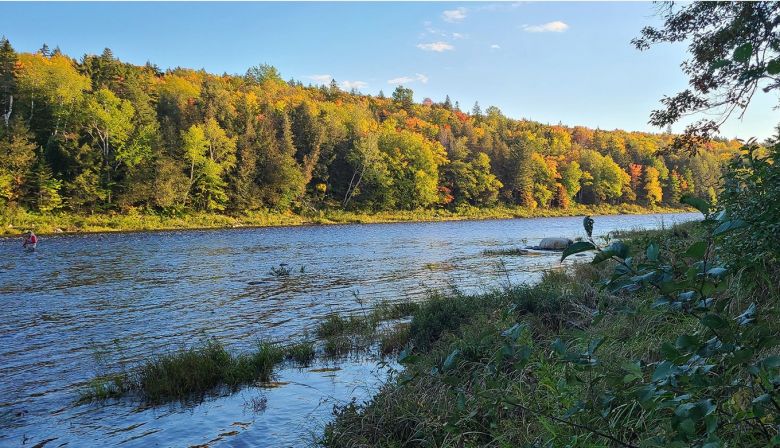
Brock Curtis of Curtis Miramichi Outfitters in Blackville:
Our weekly cycle of rainfall here in Salmon Country is slowing the angling down once again. We received heavy rainfall this past Sunday and our rivers are quite high. Fishing from the shoreline or a boat for the next day or so will be the norm. These conditions make it difficult to determine if any fresh salmon are entering our rivers. Even the tributaries are high. Most rivers have crested and should be starting to drop soon. In a couple of days it should be better.
Conditions were nice last week and the colours were becoming more noticeable every day. I lost a salmon on the Renous and another angler above me hooked one. I heard of other anglers hooking salmon on the Cains and the Main Southwest Miramichi. Quite a few anglers are around so we will be hearing more at the tackle shop soon. It seems as though a few fresh salmon were coming into the river system. They seemed to be there if you were willing to put the time in and be patient.
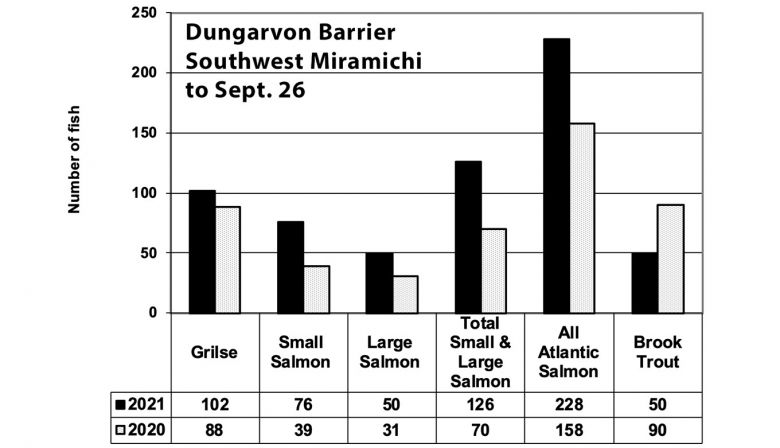
The Northwest Miramichi Barrier count is also available. To Sept. 26 there were 188 grilse and 98 large salmon, vs. 110 grilse and 131 large salmon in 2020.

The Renous was up about 30cm. As of last night, the Little Southwest Miramichi and Renous are still a little on the high side, while the Northwest Miramichi is at the perfect height for anglers.
We are still only seeing the odd Atlantic salmon on the Little Southwest Miramichi and Northwest Miramichi. We are starting to see a few fish on the Renous.
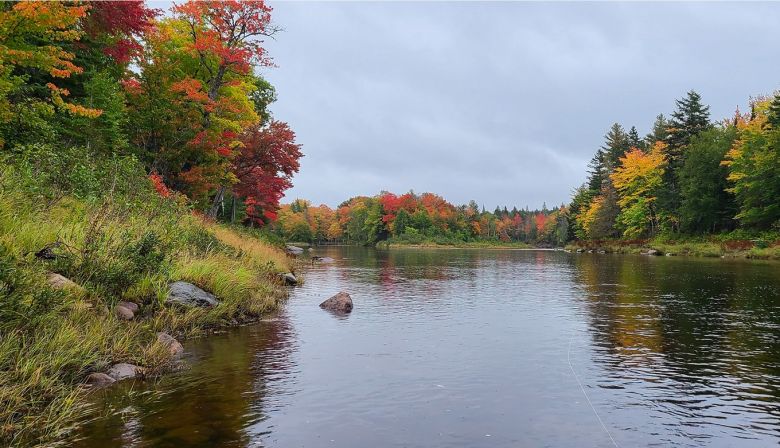
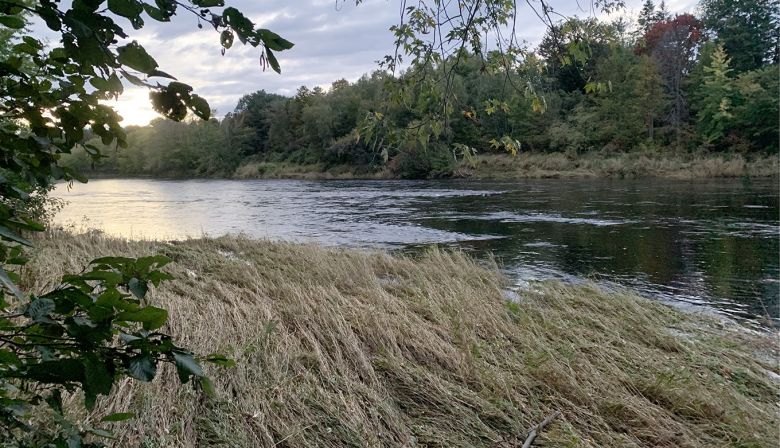
Nepisiguit
On Sept. 30 the Pabineau First Nation reported 305 grilse and 258 large salmon had been counted at the Nepisiguit Fence. Atlantic salmon are still arriving – a good sign!
